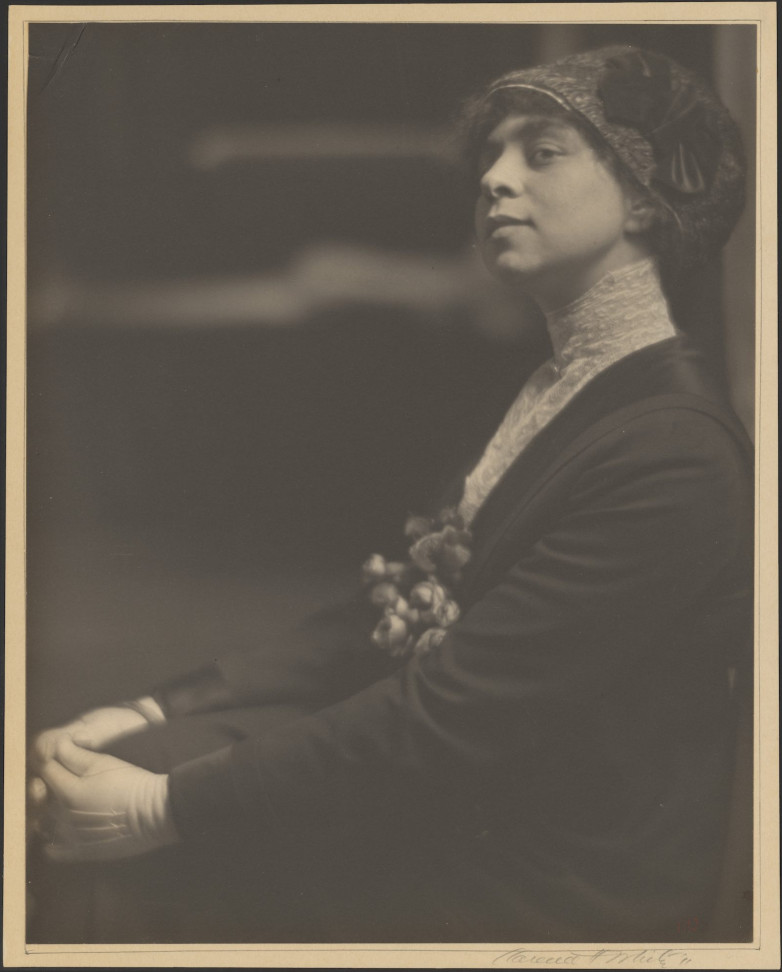New Exhibition Pays Tribute to Leading Librarian Belle da Costa Greene

Clarence H. White (1871–1925) portrait of Belle da Costa Greene, 1911.
The Morgan Library & Museum's new major exhibition will focus on the life and career of its inaugural director, Belle da Costa Greene, the first retrospective of her life on the 100th anniversary of her appointment.
Running October 25 through May 4, 2025, Belle da Costa Greene: A Librarian’s Legacy will trace Greene’s life from her roots in a predominantly Black community in Washington, D.C., to her 24 year career at the helm of what was then known as the Pierpont Morgan Library in New York.
Greene (1879–1950) was widely recognized as an authority on illuminated manuscripts and one of the most prominent librarians in American history.
“Belle da Costa Greene’s influence is both long-lasting and expansive,” said Colin B. Bailey, Katharine J. Rayner Director of the Morgan Library & Museum. “As we conclude our centennial year, we are honored to present this landmark exhibition, which returns to the founding of the Morgan as a public institution and celebrates Greene’s pioneering contributions not just to the Morgan, but to the fields of librarianship and museology more generally.”
Greene is well known for her instrumental role in expanding and developing the exceptional collection of rare books and manuscripts amassed by the American financier J. Pierpont Morgan, who hired her as his librarian in 1905. Through significant new research, this exhibition presents other aspects of her life that have not been well understood to date, including her career as director and aspects of her education, her private collecting, and the dense social and professional networks she established.
New discoveries include the earliest known photograph of Greene, the first letter she is known to have sent, the only known photograph of her mother, and objects revealing details of her first library job at Princeton University. In 1924, Greene was appointed director of the Pierpont Morgan Library. The exhibition explores the growth of the Morgan as a public educational institution under her leadership as well as Greene’s place among her contemporaries in librarianship, specifically Black librarians working in New York City.
Archival gaps remain in the story of Greene and racial passing, in part due to her choice to destroy her personal papers before her death. In the 1890s, Greene’s mother changed the family surname from Greener to Greene, and the family began to pass as white in a racist and segregated America. The exhibition examines the complexity of this decision.
The exhibition also demonstrates Greene’s impressive acquisitions including the Crusader Bible, the Amherst Caxtons, and literary drafts by Elizabeth Barrett Browning, Honoré de Balzac, and Edgar Allan Poe. As one of only two women on the auction floor, she bid nearly $50,000 to secure the unique surviving copy of Sir Thomas Malory’s Le morte d’Arthur, issued by William Caxton in 1485. Two of Belle Greene’s final acquisitions were a letter by Frederick Douglass and an Ethiopian Gospel Book made for Princess Zir Ganela.
When acquiring literary manuscripts, Greene showed a marked preference for rough drafts: “I am eager to get the first draft of a book or poem in mss - and note the differences - the growth of the idea - or the betterment of the expression,” she wrote.
With the exhibition’s opening, two major research projects will launch for the benefit of the public, the first documenting the relationship and correspondence between Greene and Italian Renaissance art scholar Bernard Berenson, and the second bringing together every known portrait of Greene, including several recently discovered photographs.















